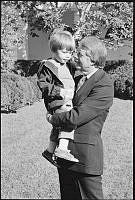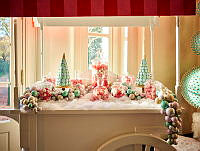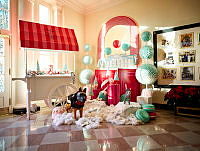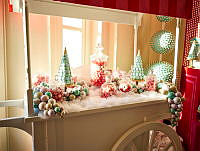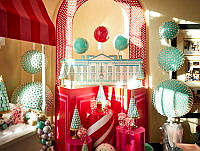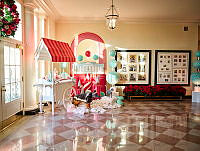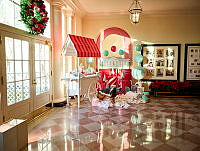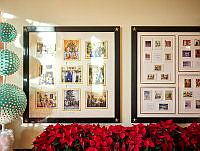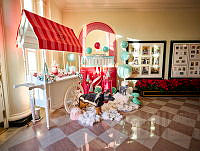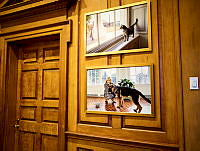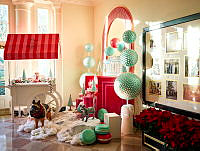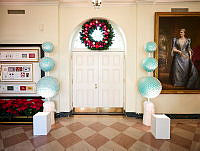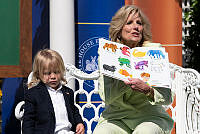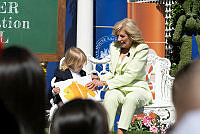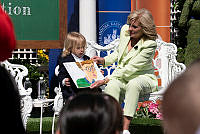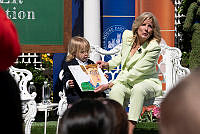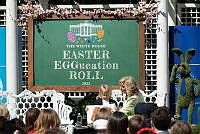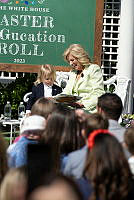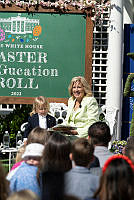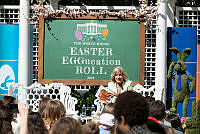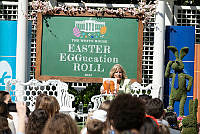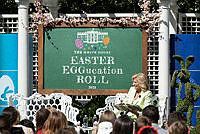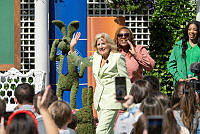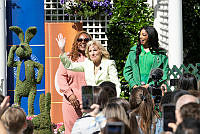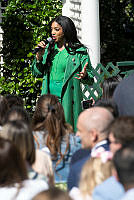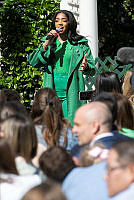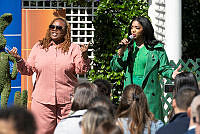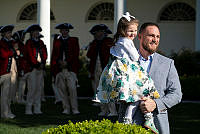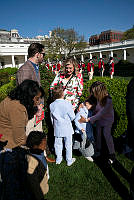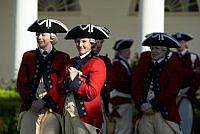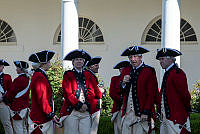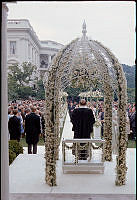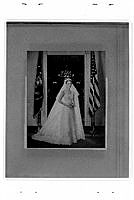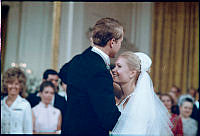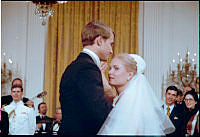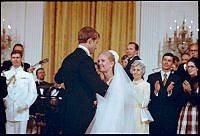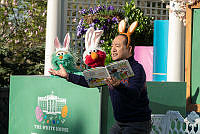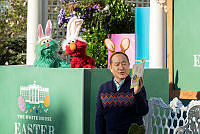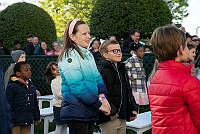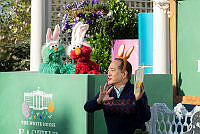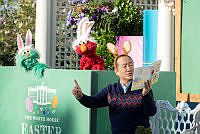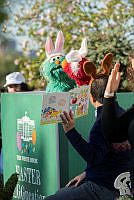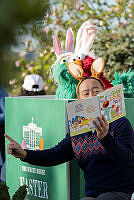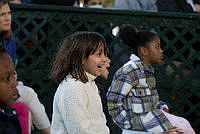The West Garden
A Succession of Ideas
Copyright © Summer 2015 White House Historical Association. All rights reserved under international copyright conventions. No part of this article may be reproduced or utilized in any form or by any means, electronic or mechanical, including photocopying, recording, or by any information storage and retrieval system, without permission in writing from the publisher. Requests for reprint permissions should be addressed to books@whha.org

A photograph of the Rose Garden, taken from the roof above the Oval Office in June 2011 during a State Dinner in honor of Chancellor Angela Merkel of Germany.
In the early days of gardening at the White House, the gardens were fenced away to facilitate care and watering. A large vegetable garden was planted on the west side, with a water pump nearby. There were ornamental plants, but there is no record of an ornamental garden until Andrew Jackson’s was built on the east side about 1833, centered upon an orangery that provided medicinal fruit through the winter. While the written information on Jackson’s garden is extensive, only one illustration exists, an accidental view captured in a construction shot of the Treasury Building during the 1850s. This extension to Treasury led to demolition of the garden in 1856.
President Ulysses S. Grant’s old army aide, the irascible General Orville Babcock, took charge of improving the grounds and built along the south side of the house narrow flower gardens pierced by winding gravel paths. These survived, vine choked, until Theodore Roosevelt’s renovations of 1902 and Edith Roosevelt’s design of a “colonial” garden where the present Rose Garden now stands.

First Lady Edith Roosevelt’s “colonial” garden, ca. 1902-1903. The paisley shaped flower beds framed by low boxwood abounded in old-fashioned flowers, Johnny-jumpups, daisies, and wildflowers that Mrs. Roosevelt and her friends gathered on walks in the country.
Abby Gunn Baker Papers, The White House
The Rose Garden as planted in 1913 according to First Lady Ellen Wilson's modifications of plans by George Burnap.
Library of CongressThe first Mrs. Woodrow Wilson, Ellen Axson Wilson, demolished the colonial garden in 1913 and with the noted landscape architect George Burnap, who was very much involved in Washington’s “city beautiful” movement, designed a wholly modern rose garden, with low, sharply tailored privet hedges outlining beds of roses and tall-hedged allées flanking ceremonial walks. On the west, where an enlarged West Wing would one day contain the Oval Office we know today, Mrs. Wilson built a lattice wall, a triage upon which to hang hers and her friends paintings during receptions and garden parties. It was this garden, or rather the modified remains of this Wilson garden, that was in place when Rachel Lambert Mellon designed today’s Rose Garden for President John F. Kennedy.













